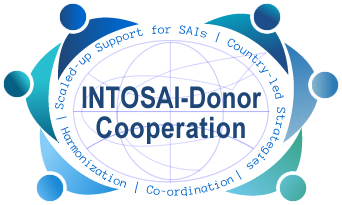IDI/SAI Fighting Corruption Programme2016-2018
Background
Corruption is most commonly defined as the misuse or the abuse of public office for private gain. It can come in various forms and a wide array of illicit behavior, such as bribery, extortion, fraud, nepotism, graft, speed money, pilferage, theft, and embezzlement, falsification of records, kickbacks, influence peddling, and campaign contributions. Corruption causes tremendous damage to public institutions ranging from financial loss, to loss of organizational performance, reputation and credibility. Supreme Audit Institutions are one of the key players in the fight against corruption. By virtue of their oversight function, they can play an important role in creating an enabling environment for good governance. Audits as exercised by SAIs, make risks visible, and build robust and effective internal controls that contribute specifically to the prevention of corruption. By reporting their audit findings to Parliament and publicizing them, SAIs create a climate of transparency that largely contribute to detecting and more importantly preventing corruption. SAIs have different mandates in fighting corruption. As a public institution, It is also important that SAIs lead by example in the fight against corruption. ISSAI 30 also requires SAIs to have and implement a code of ethics to ensure ethical behavior in the SAI.
The 2014 Global Survey indicates that many SAIs face considerable challenges in fulfilling the public expectations when it comes to being effective in terms of preventing, detecting and reporting on corruption. 98 SAIs and seven INTOSAI regions have prioritized this area. The IDI’s prioritization matrix also indicates this programme as a high priority programme that will address the needs of SAIs in developing countries.
The objectives, activities and expected results from the programme are:
Objective: Greater effectiveness of SAIs in fighting corruption.
Target SAIs: This programme will be offered across the INTOSAI regions
Level of Participants: Head of SAI, top management (for management meeting) , Middle management (functional heads), Audit teams , SAI staff (audit and non audit), Staff from agencies involved in anti corruption
Cooperation Partners: INTOSAI
Expected outcomes:
Outcomes
•Statement of commitments signed
•Assessment of implementation of ISSAI 30 conducted by SAIs
•SAIs conduct ISSAI based performance audits of Institutional Frameworks for fighting corruption and issue reports
•SAIs have effective relations with their stakeholders for fighting corruption.
•SAIs conduct assessments of ISSAIs 30 implementation and audit of institutional frameworks for fighting corruption on a regular basis by including these in their operational and audit plans.
•SAIs report enhanced interaction
Expectations from participating SAIs
• Active participation in the research project and development of GPGs and courseware by providign information and resource persons.
•Nomination of SAI teams ( two teams of two to three persons) as per agreed criteria for training on and conducting assessment of ISSAI 30 implementation and audit of institutional framework
• Provide sufficient time and resources to the teams during training ( internet access ) and for conducting the assessments and audits
• Provide teams time and resources to participate in audit planning and audit review meetings.
• Issue the audit reports as per the mandate of the SAI.
• Include such audits in the regular audit portfolio of the SAI, so that they are carried out on regular basis.
• Carry out assessments on a regular basis to get assurance on the implementation of ISSAI 30
•Participate in the quality assurance process.
•Share lessons learned and successes at the regional level and with other INTOSAI regions
• Cooperate with IDI and CREFIAF to effectively implement the agreed monitoring and evaluation framework for this programme Funding: IDI Basket funds, MFA Hungary, DFAT Canada, USAID
SAIs connected to this project
- Afghanistan
- Albania
- Argentina
- Benin
- Bolivia
- Burkina Faso
- Burundi
- Cameroon
- Cayman Islands
- Central African Republic
- Chad
- Chile
- China
- Comoros
- Costa Rica
- Democratic Republic of the Congo
- Djibouti
- Ecuador
- El Salvador
- Fiji
- Gabon
- Georgia
- Guatemala
- Guinea
- Honduras
- Iraq
- Jamaica
- Jordan
- Kazakhstan
- Kuwait
- Kyrgyz Republic
- Liberia
- Libya
- Madagascar
- Malaysia
- Maldives
- Mali
- Mexico
- Morocco
- Nepal
- Niger
- Oman
- Pakistan
- Palestinian Territories
- Panama
- Peru
- Republic of the Congo
- Samoa
- São Tomé and Príncipe
- Saudi Arabia
- Sierra Leone
- Solomon Islands
- Sudan
- Syrian Arab Republic
- Tanzania
- Thailand
- Togo
- Tunisia
- Vanuatu
- Zambia
